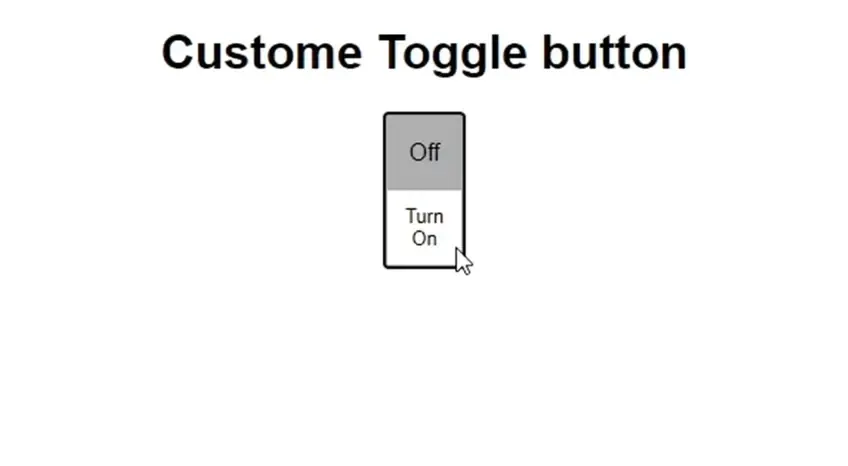Create an Accessible Custom Toggle Button with HTML, CSS, and JavaScript

In this blog, we are going to create a custom toggle button with accessibility features to ensure a great experience for all users.
You can find all the code in my GitHub and feel free to use it.
Steps to Create the Toggle Button:
- Design the toggle button
- Add JavaScript to make the button functional
- Make the button keyboard accessible
HTML Structure
<div
id="toggle-container"
class="toggle-container"
role="checkbox"
aria-checked="false"
tabindex="0"
>
<div id="toggle-button" class="toggle-button">
<p>Turn <span id="toggle-button-text" class="dynamic-text">On</span></p>
</div>
<p id="toggle-container-text">Off</p>
</div>Explanation:
- The outer
div(toggle-container) acts as the container for the toggle button. - Attributes like
role="checkbox",aria-checked, andtabindexenhance accessibility. - The inner
div(toggle-button) functions as the actual button. - The text inside
ptags will change based on the toggle state.
CSS Styling
In this section, we define the styles for the toggle button and its container. We use CSS to control the layout, colors, and the visual state changes when toggled.
.toggle-container {
user-select: none;
cursor: default;
background: rgb(173, 173, 173);
width: 50px;
height: 100px;
display: flex;
text-align: center;
flex-direction: column;
padding: 2px;
}
.toggle-button {
background: white;
width: 50px;
height: 50px;
order: 1;
font-size: 13px;
text-align: center;
}
.dynamic-text {
display: block;
}
.toggle-button.toggle-button-active {
order: 0;
color: black;
}
.toggle-container.toggle-container-active {
background-color: rgb(16, 121, 190);
color: white;
}JavaScript Functionality
In this section, we will add JavaScript to handle the toggle functionality. This ensures that when users click on the button, it changes state and updates the UI accordingly.
var initialState = false;
var toggleContainer = document.getElementById("toggle-container");
var toggleButton = document.getElementById("toggle-button");
var toggleContainerText = document.getElementById("toggle-container-text");
var toggleButtonText = document.getElementById("toggle-button-text");
toggleContainer.addEventListener("click", handleClick);
function handleClick() {
initialState = !initialState;
toggleContainer.classList.toggle("toggle-container-active");
toggleButton.classList.toggle("toggle-button-active");
if (initialState) {
toggleContainerText.innerHTML = "On";
toggleButtonText.innerHTML = "Off";
toggleContainer.setAttribute("aria-checked", "true");
} else {
toggleContainerText.innerHTML = "Off";
toggleButtonText.innerHTML = "On";
toggleContainer.setAttribute("aria-checked", "false");
}
}Making It Keyboard Accessible
To improve accessibility, we need to ensure that users who navigate using a keyboard can interact with the toggle button.
We do this by listening for key events like Spacebar and Enter.
This allows users who rely on keyboards to toggle the button without using a mouse.
toggleContainer.addEventListener("keydown", handleKeydown);
function handleKeydown(event) {
var flag = false;
switch (event.keyCode) {
case 32: // Spacebar
case 13: // Enter
handleClick();
flag = true;
break;
default:
break;
}
if (flag) {
event.stopPropagation();
event.preventDefault();
}
}Conclusion
Now you have a fully functional and accessibility-friendly toggle button that responds to both clicks and keyboard interactions. This follows best practices for accessibility, ensuring a better user experience for all.
For more best practices, check out w3.org and for key codes, visit keycode.info.
Stay safe and keep your surroundings clean! 🙂